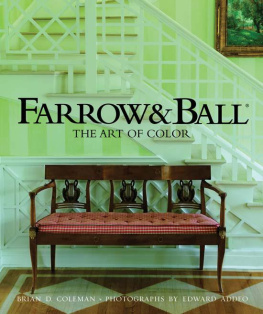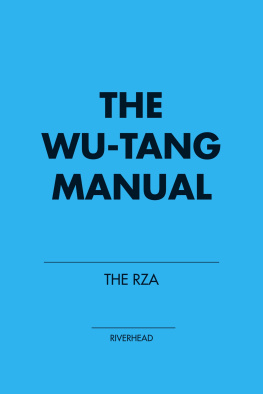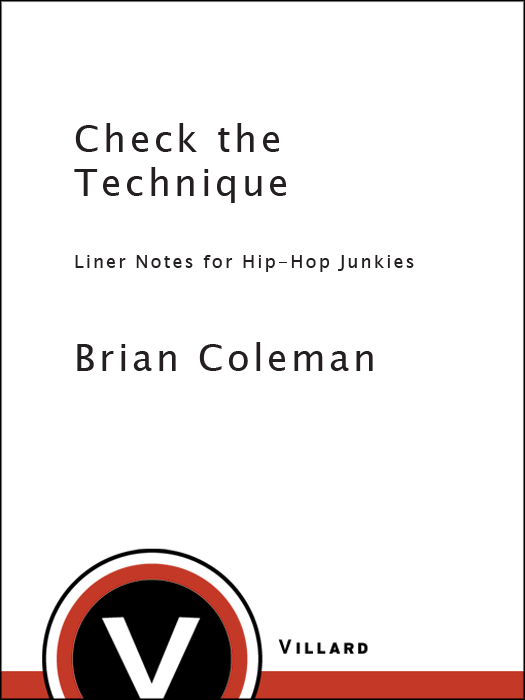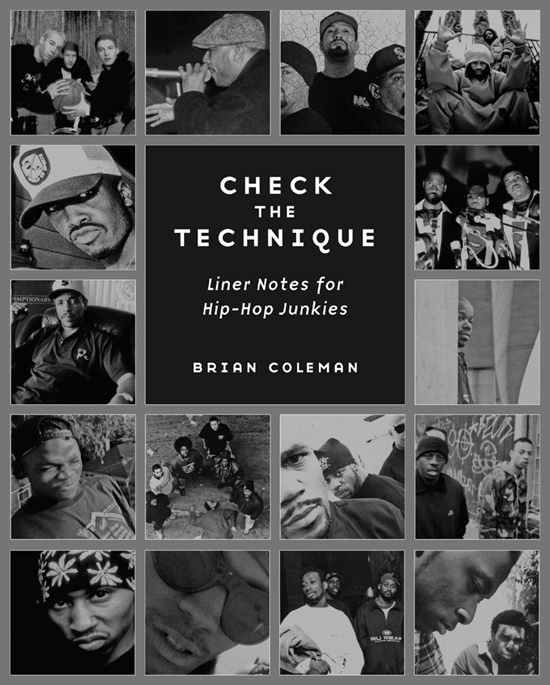2007 Villard Books Trade Paperback Edition
Copyright 2005, 2007 by Brian Coleman
Foreword copyright 2007 by Ahmir Thompson
All rights reserved.
Published in the United States by Villard Books, an imprint of The Random House Publishing Group, a division of Random House, Inc., New York.
V ILLARD and V C IRCLED Design are registered trademarks of Random House, Inc.
Originally published in different form in the United States by Wax Facts Press, Somerville, Mass., in 2005.
All of the photographs in the work, except as noted, are by Brian Cross and are copyright by B+.
Library of Congress Cataloging-in-Publication Data
Coleman, Brian.
Check the technique: liner notes for the hip-hop junkie / Brian Coleman.
p. cm.
eISBN: 978-0-307-49442-9
1. Rap (Music)History and criticism. 2. Rap musiciansUnited States. I. Title.
ML3531.C65 2007
782.42164909dc22 2006100800
www.villard.com
Designed by Stephanie Huntwork
v3.1
To every hip-hop pioneer in this book,
for never raising your hand and
asking for permission.
FOREWORD
S ince I got a record deal in 93, my peers have always chided me with the Ahmir, you need to get out more often talk. But I stay inside too much. I cant help it. Im a stickler for all the information I can get out of music.
Ever since I absorbed all twenty-four pages of the liner notes to Stevie Wonders Songs in the Key of Life, I realizedeven as a five-year-oldthat the information about how a record got made was just as important as (and in some cases more important than) the product itself. Those details always got me closer to that fly-on-the-wall experience, watching the creation of music.
And thats why the packaging of most hip-hop records was frustrating to me. Aside from a wacky De La project or your amazement at the amount of text Chuck D was able to hold in his head for his thank-yous (by the way, Chuckcan the Roots get Extra Strength Posse status now?), there wasnt much in the way of information for the music that I was supporting. With no Internet and only the obligatory Rap Pages/Right On! feature, I was left to my own devices. So I asked my own questions whenever I could.
Some cats couldnt wait to spill the goods. (Yeah right, Pete you wanna convince us that you fit all those loops in the thirteen-second, handicapped SP-1200 for Number One Soul Brother with one pass?!?!) Some engineers are still in therapy over their experiences. (Brian, make sure you and Dave Tompkins do an engineer tell-all book so Tom Coyne can give you his well-executed tale of mastering and sequencing (in four days at that!!!!!!!!!) Raekwons Only Built 4 Cuban Linx.) And some cats, I just plain scared them off (my bad, Tip a Hello, Im Ahmir woulda done fine).
When Brian Colemans Rakim Told Me came out, I was elated and jealous at the same time, more the former than anything. Finally, someone had put in perspective the stuff I had been dying to know about: the method of Paul Cs madness, or Ced Gees undervalued work on many a classic recording, or even the rat-infested environment the Jungle Brothers had to endure to make their debut LP. (My jealousy arose only because I was having a lot of Why didnt I think of that!?!?! moments as I kept reading.)
In pop and rock music, you are often given a thorough view of the landscape, and you are the wiser for it. Rock critics are constantly dissecting and breaking down the champions (Sgt. Peppers and Rumours) and the underdogs (Pet Sounds and Shoot Out the Lights). But its not so easy for hiphop fans with the music we love.
Back in the day, hip-hop barely got a recording budget, let alone decent packaging. On top of that, with the marketplace being what it is, if the monetary rewards on an album werent reaped, it was forgotten.
Well, not in the hearts of those who still care.
Check the Technique is a book thats been a long time coming. Better late than never!
And Brian, hurry up with the next installment were waiting.
Ahmir ?uestlove Thompson
October 2006
Illadelph
A HMIR ?UESTLOVE T HOMPSON is a Philadelphia-born-and-bred drummer, producer, DJ, and all-around music junkie. He cofounded the influential live hip-hop band the Roots and has produced and performed on eight Roots albums since 1993. In his spare time, he has also found time to collaborate with artists ranging from John Mayer and Fiona Apple to Al Green and Dave Chappelle. For more information on Ahmir and the Roots crew, visit www.okayplayer.com.
PREFACE
One time, in probably 1983, I was in the park in Brooklyn. I was getting beat up by about eight kids, I dont even remember why. But as it was happening, this dude was walkin by with one of those big boom boxes. And as hes walking by, we hear [imitates the unmistakable intro drum pattern from Run-DMCs Sucker MCs, loudly]. They all stopped beating me, and we all just stood there, listening to this phenomenon. I could have run, but I didnt, I was just so entranced by what I heard. Then the dude with the box passed by and the kids continued to beat me up. But it didnt matter. I felt good. I knew right then that I had to get into this hip-hop shit.
Pras of the Fugees, 2003
I love that Pras story, which he recounted to me a couple years back as we were discussing the Fugees own phenomenon, The Score. I know that feeling hes talking about. Maybe not the feeling of getting beat up by eight kids in a park in Brooklyn but I do know the sensation of being frozen with delight after hearing a hip-hop track. Its a feeling that everyone should experience in their lives, with any kind of music, and as often as possible. Its the kind of thing that reminds you that youre really alive.
There are so many frostbite-inducing moments in this book for me. And I know Im not the only one who has been messed up by geniuses like Public Enemy, De La Soul, Pete Rock & CL Smooth, A Tribe Called Quest, Black Moon, and the Roots, to name just a few. The hip-hop that runs through my veins and does laps around my 1200s has two traits that never waver: originality and innovation.
When I put out Rakim Told Me in 2005, I had one goal: to let people eavesdrop on some amazing conversations Ive had with hip-hop legends over the years. This book you hold in your hands continues my exhibitionism and vastly expands it, featuring more than seventy-five interviews with many of the most important innovators in hip-hop. If you have a copy of Rakim Told Me, a couple of the chapters will be familiar to you. Others, like Ice-Ts Power and De La Souls 3 Feet High and Rising, have been greatly expanded since the last edition. But beyond that, there are a crateload of new chapters, many of them focusing on classic albums from the nineties.
The format is the same as the last time around, something I call Invisible Liner Notes. (I still havent figured out why hip-hop albums never had them!) One chapter, one artist, one album. Each chapter starts with background on the creators of these masterworks to let readers know where they were in their careers when the classic album in question was made. Then we get their own thoughts and memories about as many album tracks as I could squeeze out of them. Whenever possible, I stay out of the way and let the legends speak.
















